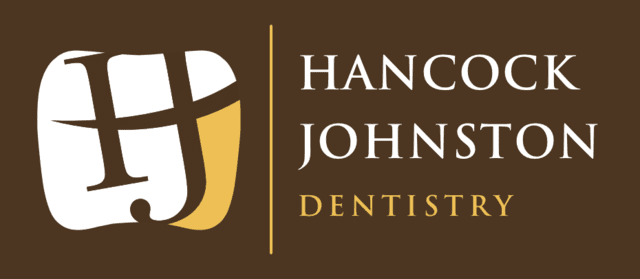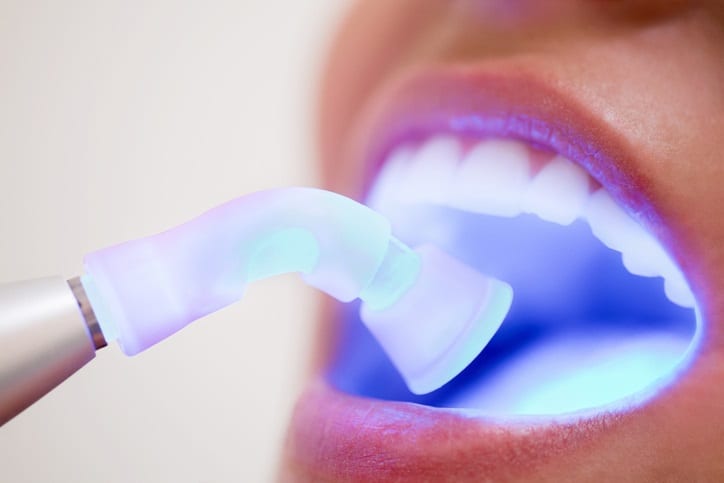When you think about dentistry, “lasers” usually isn’t the first thing to come to mind — even though laser dentistry has been used since 1989 to treat a variety of common dental issues, including tooth decay, gum disease and whitening teeth.
In fact, laser dentistry owes its roots to Albert Einstein, who in 1917 laid the foundation for the modern laser (or “light amplification by the stimulated emission of radiation”). Researchers honed this technology to use in dentistry starting in the 1960s and eventually evolved the science into the diode lasers being used in dentistry today.
Lasers create light energy in a narrow beam. When this beam hits tissue, it creates a reaction that allows for removal or shaping of tissue.
Today, laser dentistry is approved by the Food and Drug Administration for a variety of treatments that improve patients’ quality of care.
Laser Dentistry Procedures
There are two types of dental lasers: soft tissue and hard tissue. Soft tissue lasers can be used on gums while hard tissue lasers are designed for teeth.
Soft tissue lasers have a wavelength that is absorbable by water and hemoglobin (oxygenating protein in red blood cells), which makes them good to work with soft tissue while sealing blood vessels and nerve endings.
Hard Tissue Procedures
- Tooth decay. Lasers are used to remove decay within a tooth and prepare for fillings.
- Cavity detection. Lasers can detect cavities early by finding evidence of tooth decay.
- Dental fillings. Bypass anesthesia and drills with this treatment. Lasers can kill bacteria in a cavity, which can aid in the long-term health of a tooth. (Not for amalgam fillings, onlays or crowns.)
- Treating tooth sensitivity. Teeth that have sensitivity to hot and cold can be treated with dental lasers that seal tubules on the tooth’s root.
- Tooth whitening. This treatment goes a lot faster with lasers by activating a peroxide bleaching solution.
- Expose partially erupted wisdom teeth.
- Removing small amounts of tooth enamel
- Repairing worn-down fillings
- Temporomandibular Joint Treatment. Dental lasers may lessen pain and inflammation of this joint.
Soft Tissue Procedures
- Gum disease. Lasers can reshape gums and remove bacteria during root canal procedures. Lasers are also used for scaling and root planing to treat periodontal disease, along with traditional methods. Lasers can help access and remove inflamed tissue around your tooth’s root.
- Fixing “gummy smiles.” Lasers are used to reshape gum tissue so you can see more of the tooth, improving your smile.
- Crown lengthening. This procedure reshapes both gum tissue and tooth to help with better placement of restorations.
- Treating muscle attachments. Those with a thick or tight frenulum (the fold of skin under the front part of tongue that anchors to the mouth floor) may benefit from a laser frenectomy to extend tongue movement.
- Removing soft tissue folds. Lasers can be used to remove soft tissue folds from ill-fitting dentures.
- Reshaping gum tissue.
- Removing inflamed gum tissue.
- Reducing the discomfort from cold sores and cankers
- Biopsy or lesion removal. Lasers can remove palate, gum and cheek tissue to be examined for cancer.
- Viewing tissues. Lasers can allow a dentist to safely see inside a tooth or gum tissue.
- Nerve regeneration. Lasers can help boost damaged blood vessels and nerves.
For a patient going to a general or cosmetic dentist, lasers are often used for periodontal treatment and for teeth whitening. A periodontist typically has more extensive training with lasers and typically performs more procedures with lasers.
Benefits of Laser Dentistry
Laser dentistry procedures in particular have some amazing benefits. At Hancock and Johnston Dentistry
1. Limits bleeding
Lasers minimize bleeding in soft tissues by promoting blood clotting. This is especially beneficial if you have gingivitis, which causes severe gum bleeding and bone loss. Lasers kill the bacteria, helping to stem bleeding and swelling of the gums.
2. Patient optimization
Dentists can adjust the levels and wavelengths of the laser beams. This gives dentists control to address their patients’ specific issues.
3. Fast healing
Laser treatment is minimally invasive and less traumatic to the gums. This helps patients heal much faster compared with traditional surgery. The body’s healing process then stimulates stem cells to form new connective tissues, bone, and collagen.
4. Less painful
Lasers replace more invasive drills in traditional dentistry. Without the added drill pressure, there’s little to no need for anesthesia. The overall result is less pain and discomfort for patients.
5. Preserves teeth
Extremely precise lasers can address cavities without damaging the healthy parts of the tooth, leading to stronger outcomes. With soft tissue procedures, targeted gum and tissue are reduced at a lower level, with less damage to healthy tissue.
6. Minimizes infection
By using only one tool for a procedure — the laser — you lower the risk of bacterial infections. Additionally, the laser itself sterilizes the area.
7. Less anxiety
Laser dentistry may lessen the fear that many patients have of sitting in a dentist’s chair simply because the drill is no longer present! And because patients feel minimal discomfort, they will be more relaxed during the treatment.
Schedule Your Laser Dentistry Treatment Today
Here at Hancock & Johnston Dentistry, we are committed to staying on top of the latest trends in laser dentistry to deliver the best results for patients.
When you book an appointment with us, you’ll feel comforted in how thorough we are in discussing your highly personal dental plans. We will walk you through your options and explain all the benefits to the procedures we offer.
Keep your smile sparkling for a lifetime!

